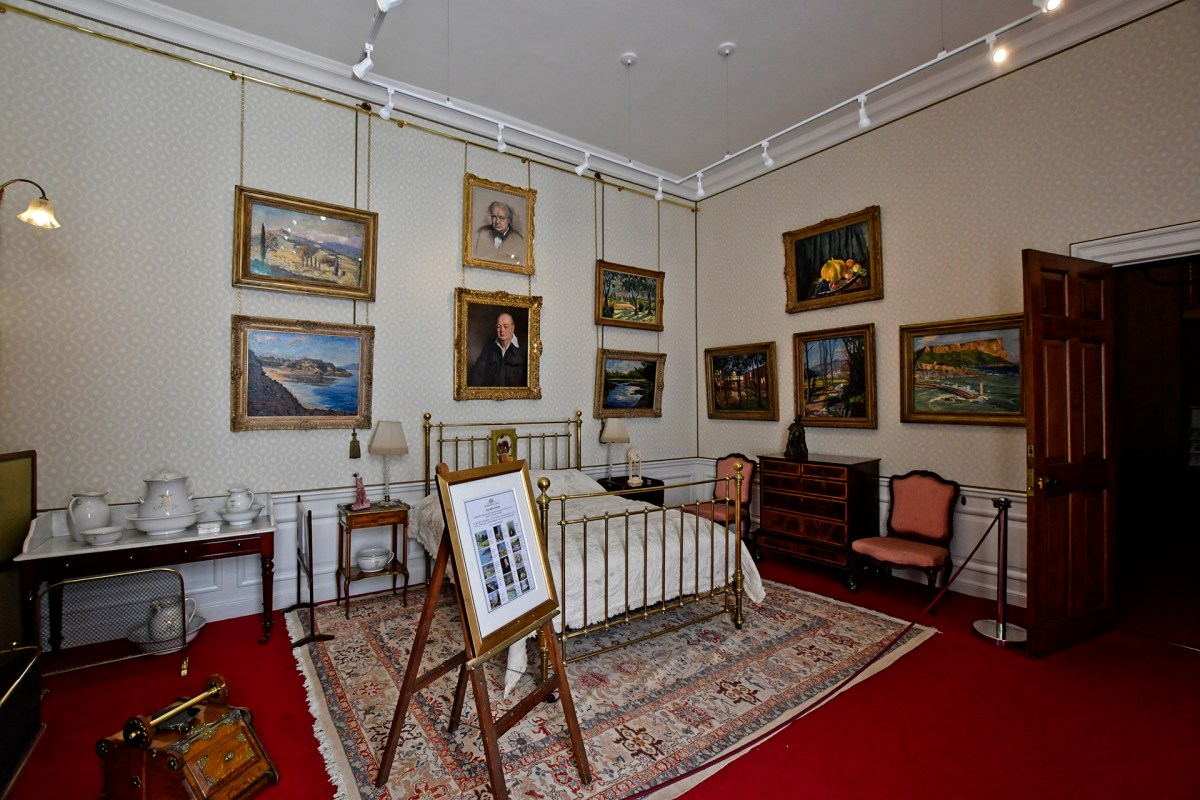The Beautiful Cotswolds & Where A History Began


We’re off to the Cotswolds, an area of 790 square miles of rolling hills — or wolds — and ancient villages in upper southwestern England. Our home for a week will be in Cirencester, often referred to as the Capital of the Cotswolds. Over 80 percent of the landscape we see is agricultural, sectioned into fields of barley, field beans, oilseed rape, and wheat. And sheep — lots of sheep.
The drive there is beautiful, and we stop several times to photograph our surroundings. And we aren’t the only ones preserving what we see. More than 350 Cotswold Voluntary Wardens look after the vistas and remarkable buildings throughout the area. The region’s classic look comes from the oolite (meaning egg stone) rock that most structures here are built of. In the northern Cotswolds, this stone, which on close examination resembles the fish eggs it’s named for, is mostly honey-colored. Further south, we’ll learn that it’s paler and creamier. The area also boasts 3000 miles of public footpaths, including two national trail walks, and is the largest one of 38 designated Areas of Outstanding Beauty in England and Wales. Rightly so.
Cirencester’s population is about 19,000, and it was the second largest town in Britain during Roman times. In later years, it was a very prosperous medieval wool town. For us, it was also close to several cities and sights that were on our list of places to visit. After wending our way there and getting settled in our well-located and cozy Airbnb, we wandered a bit and found — surprise — a place that sold meat pies, ale, and cider for our dinner.
The next morning, it was time to explore our “new” village. After a delicious breakfast at Toro Lounge (we kept going back!) just around the corner from our lodgings, we walked through the shopping district to the town marketplace. The Parish Church of St. John the Baptist, where construction began around 1115, dominates the horizon. From the hurch, we strolled through charming Cirencester Park — filled with the scent of lilacs abloom everywhere — and past its small Roman amphitheater. There we also marveled at a downed tree that had been imaginatively carved into a bench that resembled a fallen totem.
Next on our list was Blenheim Palace, and on our way there, we spied the quintessential Cotswolds village of Bibury. William Morris, the influential leader of the Arts and Crafts movement, dubbed it the “most beautiful village in England.” Originally built as a 14th-Century monastic wool store, in the 17th Century, it was converted into the weavers’ huts that today are occupied by National Trust tenants. Picturesque is an understatement — it’s even featured in British passports. Although it’s a tiny village, it offers several spots for visitors to eat and drink. There’s even one vacation cottage that can be rented through the National Trust.
On to Blenheim. Queen Anne had Blenheim Palace built in the early 18th Century as a gift to John Churchill, first Duke of Marlborough, to thank him for his victory in the battle of Blenheim in 1704. A 134-foot column, in the distance and aligned to the palace’s front door, is topped by a statue of him dressed as a Roman general. And Blenheim is the only non-royal home in England allowed to call itself a palace. But its modern-day claim to fame is as the birthplace of Sir Winston Churchill. Though he was not a duke and never lived at Blenheim, much of today’s palace features rooms that tell the story of this legendary politician’s life. The walls of the room he was born in are filled with his own paintings.
Our visit to the massive ground floor, which is part of the general admission, was hurried because we were trying to keep ahead of a very large group of students that entered at the same time we did. We took the optional added tour of the upper floors, where royalty and heads of state have slept for centuries. These floors are also home to the 11th Duke and Duchess of Marlborough, and the Duke was in his office while we were there. We didn’t see him, but the delightfully English gentleman who led our tour pointed out the Duke’s dog, lying down in a hallway that was off limits. Sadly, photos of the rooms were also off limits.
After the opulence of the palace, we meandered through the gardens we had seen from its windows, admired how beautifully the palace is situated on the banks of the River Glyme, and made the acquaintance of some very sociable pheasant. Then back to our digs in Cirencester. (A side note to anyone using maps programs to reach popular tourist destinations — be sure to ask for the Visitors’ Entrance. Twice our maps programs took us to back gates where we were not allowed to enter — Blenheim included.)
olddogsnewtrips@gmail.com


















